Where next? The Food and Travel team reveal their dream destinations
We always have, and always will, dream of the next destination. Here are the places on the Food and Travel magazine team’s wish list...
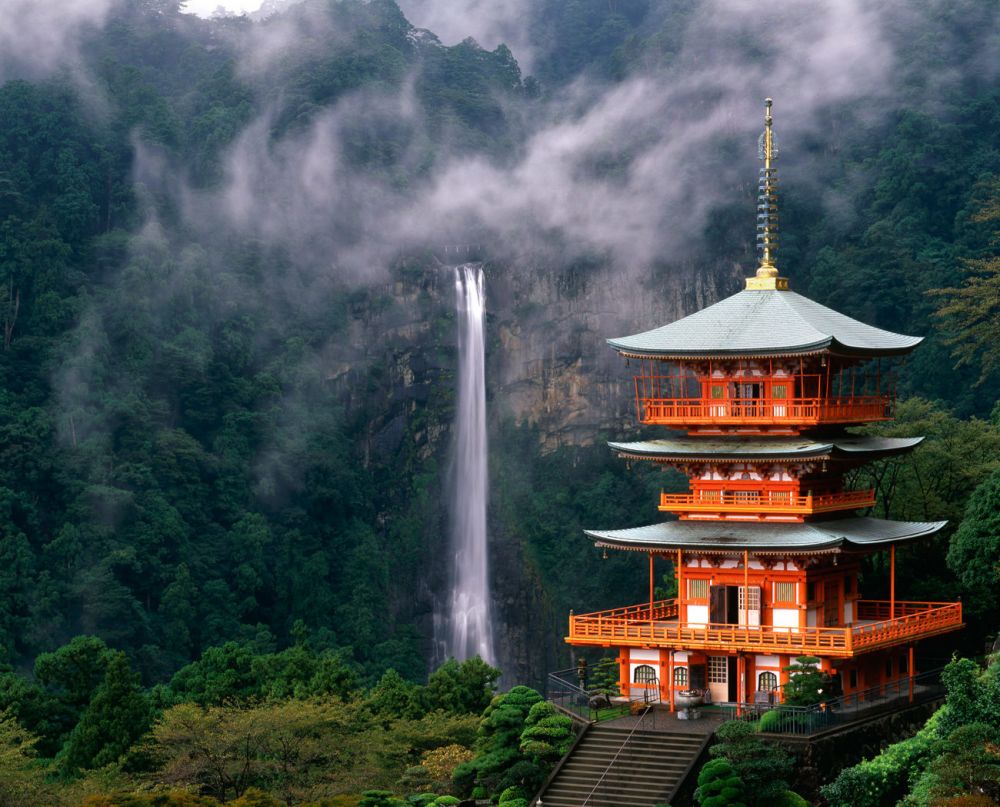
We always have, and always will, dream of the next destination. Here are the places on the Food and Travel magazine team’s wish list...
The ‘mermaids’, the white sandy beaches, the volcano, the famous waterfalls, the secret to longevity, the manicured parks and vast green spaces – there are so many reasons why I’d love to visit Jeju – the ‘Hawaii of South Korea’. Even just getting myself to South Korea is long overdue, given that I’m married to a Korean, but whenever I’ve heard stories of the country, the one place that has forever fascinated me is the island of Jeju, some 170km south of the mainland. And when people talk of Jeju, they inevitably talk of the legendary haenyeo.
These female divers – often referred to as the ‘last mermaids’ – explore the island’s seabed for conch, octopus, seaweed and urchins, hitting depths of 20m without oxygen tanks. That is a feat enough, but then they have to haul up hefty bags of edible ocean treasures, and they aren’t all young women. Many are in their 60s, 70s and there are even some in their 80s. I believe the oldest is close to 90. I’ve always wanted to meet them and hear their stories and about how they manage to do what they do.
It’s also the way of life on this island that attracts me and how the people seem to have discovered the secret to longer life – they live on average 1.1 years longer than other Koreans.
I’ve no doubt that part of that is the quality of the food. As an isolated island, Jeju has developed its own flavours and their ways of cooking differ from the rest of Korea. Needless to say, I’ve already got a list of dishes I want to try. First is heuk-dwaeji, succulent grilled pork belly made from the native black pigs and, for this, I’m going to head to Heukdwaeji Geori, Black Pork Street. They love their pork so much in Jeju, they’ve got a whole area dedicated to it, with seemingly endless barbecue restaurants serving up their take on the local favourite.
Abalone is another, specifically as it’s served up in jeonbokjuk, which sees the prized shellfish take pride of place in a porridge made with rice. Hanchi mulhoe is third on my must-eat list – a cold, refreshing soup, packed with slivers of raw cuttlefish, vegetables, soybean and red pepper paste and vinegar. It just sounds too fascinating not to try at least once.
In fact, everything sounds fascinating about Jeju, from the early-blooming cherry blossoms to the three Unesco World Heritage sites, the teddy bear and tea museums and, even, its world-famous sex-themed sculpture park – for the Instagram moments alone, that has to be on my itinerary.

Photo by Mark Parren Taylor
You’re never alone when walking Japan’s Kumano Kodō Pilgrim Path. Even if fellow white-clad pilgrims vanish into the Kii Peninsula’s dense pine forests, your journey is crowded with ghosts. These trails have hosted fearsome samurai, richly robed shoguns and imperial emperors – and that history swirls through the mist-cloaked mountains. Winding across the intersection of the Wakayama, Nara and Mie prefectures, the routes have provided passage to Japan’s greatest shrines – Hongū Taisha, Hayatama Taisha and Nachi Taisha – and oji (enshrined natural landmarks) for millennia. In contrast to the pixelated, whirring streets of Japan’s cities, this cloud-capped corner south of Kyoto offers sensory respite beneath a multitude of crimson torii gates.
The mysticism of these ancient paths has always enticed me. The Kumano Kodō trails meander beneath primeval forests and through hushed bamboo groves, cutting into villages flanked by rice paddies and looping steaming hot spring towns. They’re as much nature paths as pilgrim routes and you’ll meet travellers seeking secular enlightenment alongside those following Japan’s unique Shinto-Buddhist customs. All are welcome to partake in the ritual of prayer at the shrines, dropping a coin into donation boxes, bowing and clapping twice (to wake the gods), before bowing once more. Collecting ruby-red shrine stamps has even become a national pastime, while the chance to have your fortune told (for a mere 75p) entices even the most reluctant of pilgrims.
Of seven routes (of varying difficulties), the five-day Nakahechi Imperial Path is the most encompassing, taking in a visit to the grand 33m-high torii gate at Hongū Taisha shrine, the overgrown ruins of an abandoned settlement, a soak in hot springs and Japan’s largest waterfall, Nachi Falls. Pick up a bamboo hiking stick from the start-point town of Tanabe and pad eastwards. Accommodation is limited but not lacking in quality. The local tourist board tb-kumano.jp provides a list of the best.
Once I’ve collected my shrine stamps, unravelled my fortune and found peace under the pines, the return to civilisation calls for a little luxury. I’ll be spending a night at Kyoto’s Sowaka Hotel sowaka.com for its blend of tradition and modern extravagance.
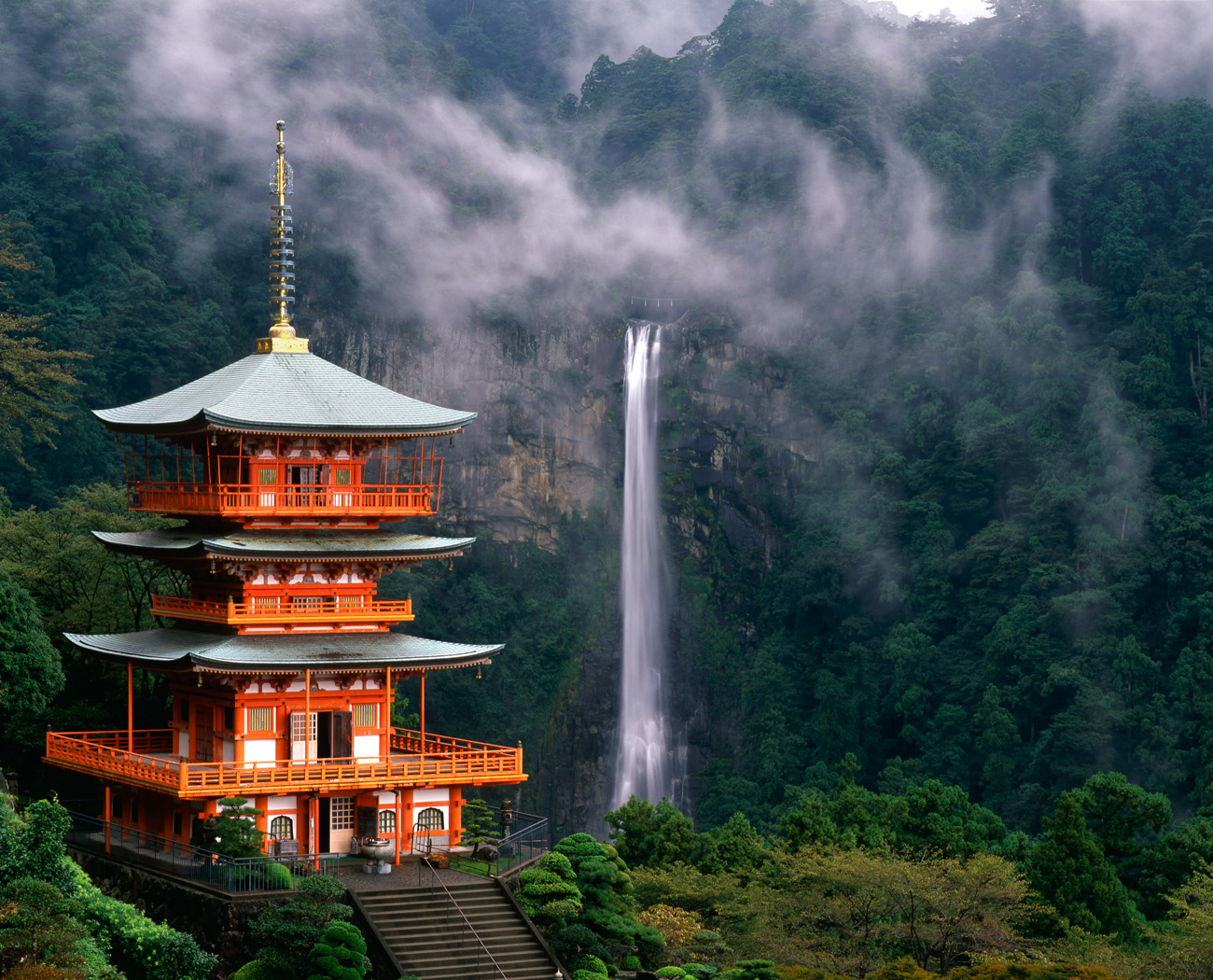
Photo by Kumano Travel / JNTO
Beguiling streets, waves of sultry heat, a vibrant art scene, and the perfume of fired-up parillas, all punctuated by the ellipsis of a tango beat: what’s not tempting about Argentina’s lively capital? Its moniker the ‘Paris of South America’ says everything about its slant. Constantly reimagining itself, it’s a city of many faces; each of its 48 barrios offering a snapshot of local life in its own right. Their origins sit firmly in the colonial era, when, in the face of urban sprawl, each housed a pulpería – bars known for hosting aperitivo hour, something porteños (and my household) honour like law – providing a sense of community.
Whatever your fancy, there is a pocket of BA for everyone. Take jacaranda-lined Palermo, for example, with its throng of on-the-pulse bars, craft breweries, modern art museum, polo clubs and boutique design digs. Or Recoleta, resplendent in old-money grandeur, home to the dramatic Cementerio de la Recoleta, luxurious hotels and café-lined squares. Smart Puerto Madero’s plentiful green spaces include the Costanera Sur Ecological Reserve, while historic La Barca boasts a colourful hodgepodge of painted buildings. Pulsing San Telmo – old school at heart with its Sunday antique markets – champions the city’s night hawks with jazz clubs and tango shows – I’ll report back on whether I hit the dance floor myself... As for the food, Caballito’s Mercado del Progreso is high on my list, with vendors serving everything from tender slow-cooked Argentine steaks, grills and picadas, to empanadas, tamales and Italian- inspired deli classics – a legacy of 19th-century immigrants.
If, like me, you’ve discovered a penchant for Argentinian reds during lockdown, a twin-centre trip to take in the sweeping landscape and cutting-edge wine resorts around Mendoza is just the ticket. For those of us who rarely get above third gear in the city, a road trip adds an appealing dimension. The 11-hour route takes in swathes of open road as the foothills of the Andes unfurl. Maipú and Luján both boast wineries showcasing inky, fruity malbecs and tropical-noted torrontés. But the Uco Valley’s Vine Resort vineresortsandspa.com – its restaurant led by cooking-over-flame guru Francis Mallmann – pips it for me. Because that’s what travel’s about: great food, quality wine, unique experiences, glorious scenery and good times.
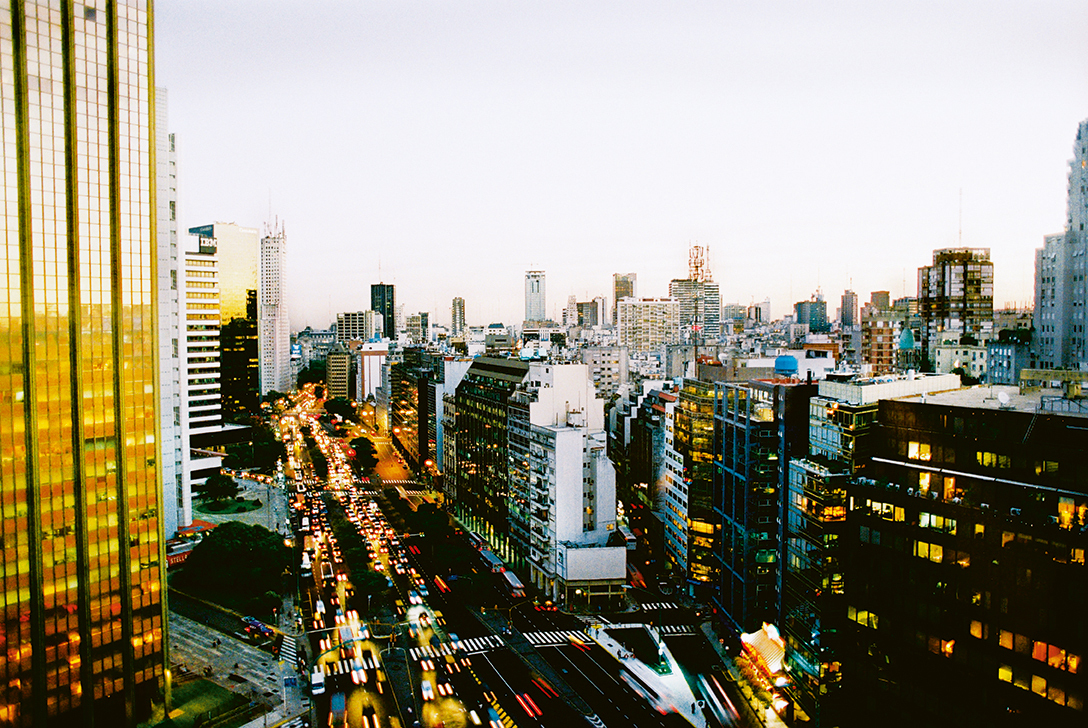
Photo by Buenos Aires City Tourist Board
For any lover of the natural world, the Galápagos Islands have always held an irresistible appeal and I’m no different – it’s been a lifelong ambition to visit with my family. So many tales – in print and on the big and small screen – are told of Charles Darwin’s time on Galápagos, and how his five-week study of the animals of the islands inspired his theory of evolution presented in On the Origin of Species, that visiting would almost be part-pilgrimage, part-wildlife expedition.
Around 1,000km from South America, yet technically part of Ecuador, the 19-island archipelago is so remote that once it was only visited by refuge-seeking pirates, but it’s the isolation, or, rather, the unique wildlife that developed as a result of that isolation, that’s always drawn me to them. The giant tortoises, the marine iguanas, the flightless cormorant: across a landscape shaped over millennia by volcanic eruptions, it would be the most unique safari in the world, with an almost otherworldly feel to it. Staying at the luxurious eco-resort Pikaia Lodge pikaialodge.com would make a great base from which to explore.
For a photographer, Galápagos is the most perfect location shoot. The locals – the furry, feathered, scaled and shelled ones that is, not the 30,000 walking, talking ones – are said to largely remain unfussed by the passing travellers, so often stick around for a portrait or two. With the vivid blue-footed booby, the volcano-red chest of the magnificent frigatebird, multicoloured paintwork of the Sally Lightfoot crabs and even the muted tones of the local tortoises; when the beautifully barren Galápagos landscapes can’t deliver the palette you want, the residents will.
I’d combine my visit with a trip to mainland Ecuador, taking in a second of the world’s biodiversity hotspots. Different landscapes, different climate, thousands of different species – it would be an experience to make up for any time in lockdown.
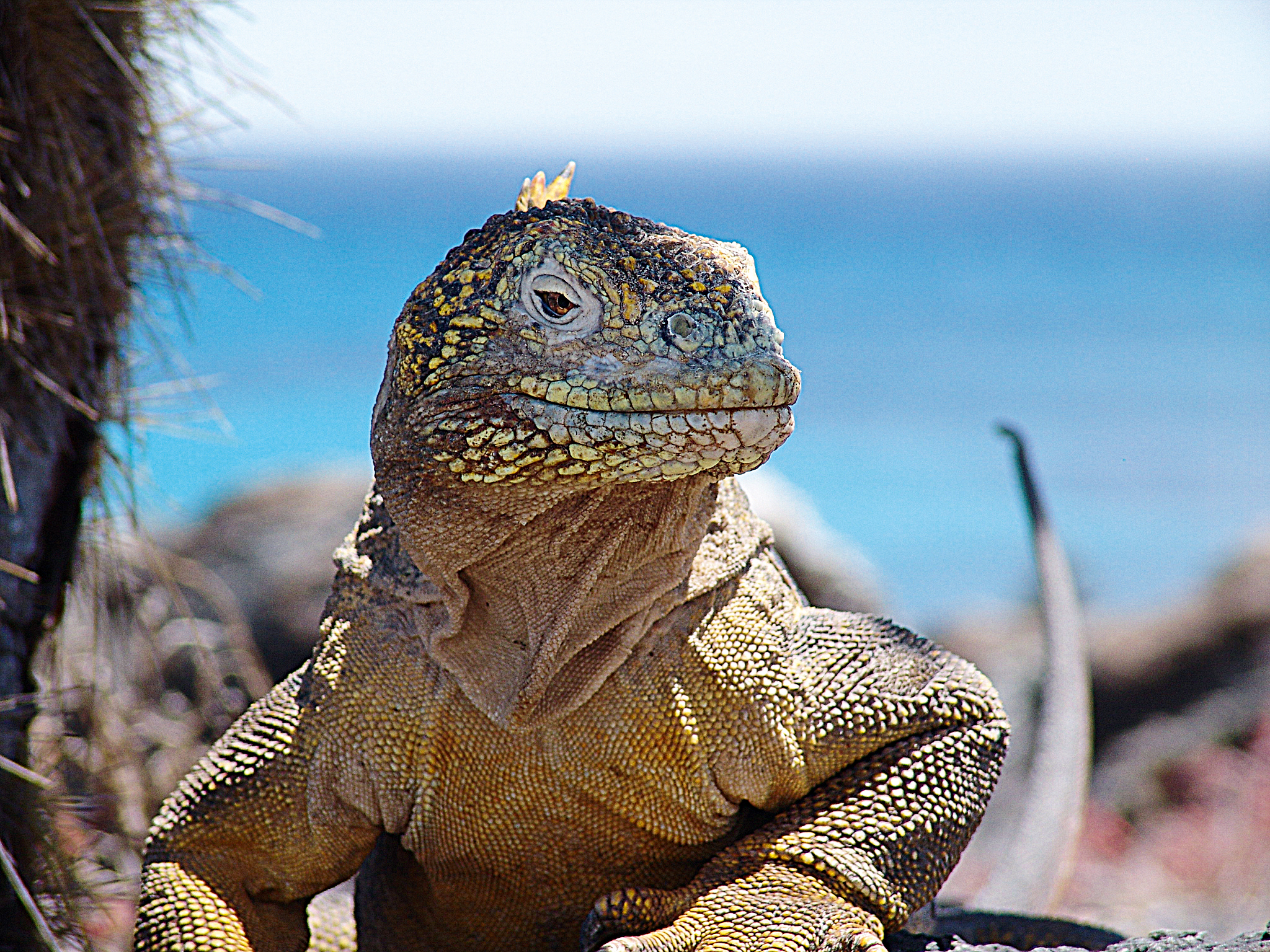
Photo by Pikaia Lodge
Papua New Guinea has always felt like the last true wilderness on Earth, a place that time forgot, where few people travel to and where ancient tribes lie hidden deep in thick tropical rainforest. There are said to be something in the region of 800 different languages spoken, which only seems to highlight how even the locals have managed to keep away from each other. As well as having the Pacific attributes of the coral- and tropical fish-rich balmy waters lapping the whitest of sandy shores, it has mangroves, wetlands, rainforest, volcanoes and highlands, all populated with the weird and wonderful of the animal world, where the birds-of- paradise couldn’t decide which colour to be, so chose all of them.
As one half of one of the largest islands on earth – the other half being the Indonesian Western New Guinea – Papua New Guinea has near impenetrable forests, amid which tribal living is still dominant, with only 18 per cent of the country’s eight million people living in urban areas. That the modern world is alien to so many, and that there’s thought to be undiscovered tribes still out there, makes it the ultimate off-the-beaten track destination. Even finding the track in the first places seems enough of a challenge.
While exploring those jungles and discovering what tribal life entails is the main draw for me, the other is the scuba diving, with 52,000sq km of reef systems said to rival Australia’s Great Barrier, but with the added intrigue of Second World War wrecks – the result of allied bombing of the Japanese military base that occupied the country. It’s just always felt like a place full of a thousand stories, and nearly all of them still to be told.
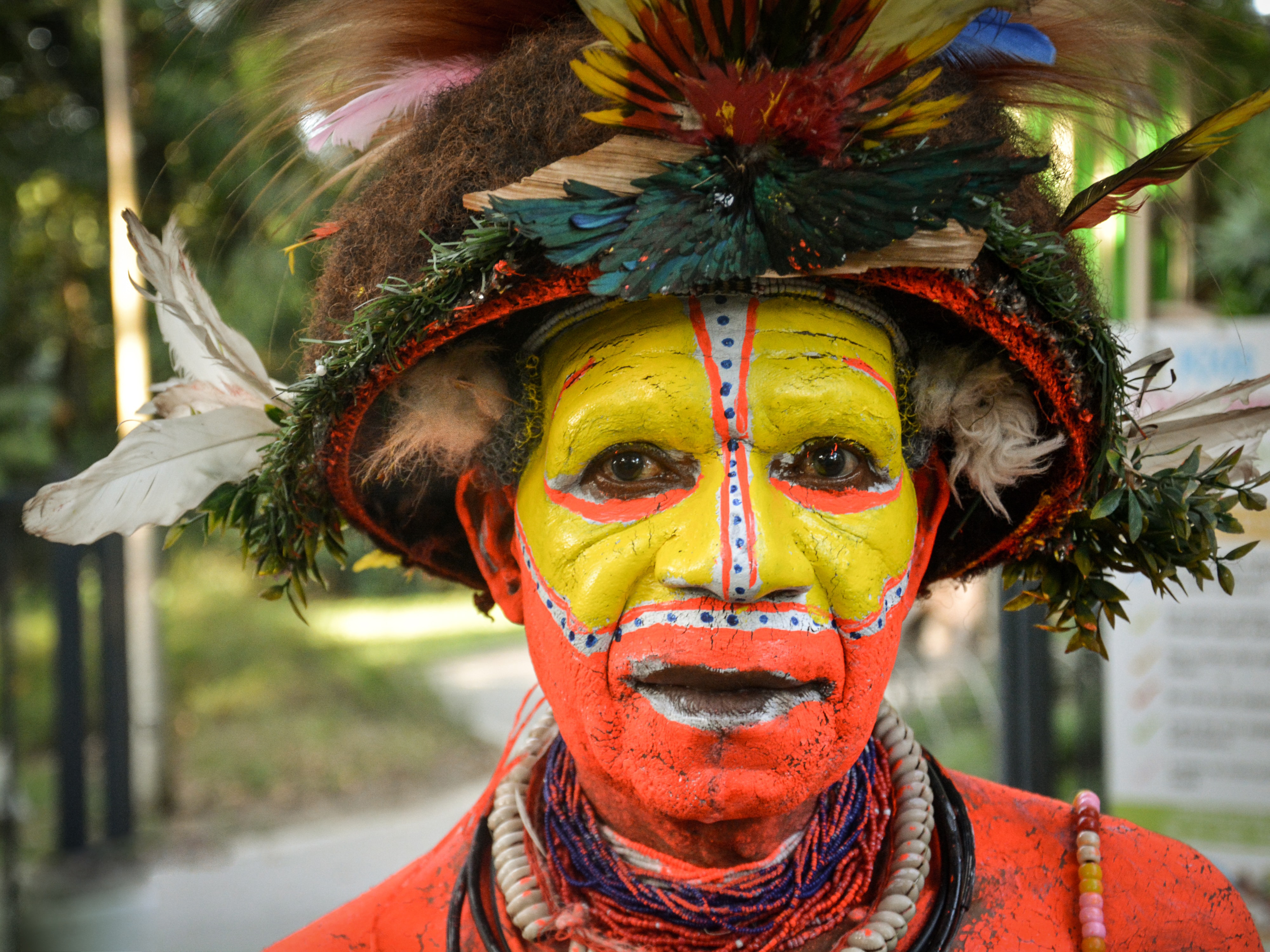
Photo by Unsplash / Adli Wahid
It may have been the tomato frog, an amphibian so vibrantly painted it could be a living Warhol. Or maybe the tenrec, an animal akin to a punk hedgehog with Eighties-style highlights. The technicolour panther chameleon – the Pzazz lolly of reptiles – could also have done it, as might any one of the 60 lemur variants that have made Madagascar famous thanks to their animated DreamWorks avatars.
Whichever one of the 25,000 or so Madagascan animal residents you first came across – be it on pages print or digital – would have left you captivated and wanting to find out more about this fascinating island. For reference, mine was the fossa – like a cougar muddled with a mongoose.
Just 400km from the east coast of Africa, yet first populated by Indonesians arriving on outriggers from the third century, everything about the giant island of Madagascar – the fourth biggest in the world (Greenland is the first) – is full of intrigue.
The biodiversity is immense: it’s one of only 17 countries declared ‘megadiverse’ by Conservation International, with WWF reckoning some 95 per cent of Madagascar’s reptiles, 89 per cent of its plant life, and 92 per cent of its mammals exist nowhere else on Earth. Such wildlife can’t live in one landscape, so Madagascar obliges. Along with some 11,000 plant species – including the iconic baobab tree, thick-limbed but with an intricate bonsai-like topping – the residents are spread across lush rainforest, grassy plains, forested mountains, wetlands, mangrove and tropical coastline. Go beyond its sandy shores and you’ll find 250 islands and The Great Reef, 450km long and home to many of the country’s 300 species of coral and 400 species of tropical fish.
It’s not just the potential of discovering wildlife you never even knew existed that makes Madagascar my next stop, it’s also the people.
A mix of the original Indonesians who settled in the highlands and the East Africans who settled along the coast, they speak both Malagasy and French, due to colonial rule from 1800s to 1960.
And they’ve plenty of yarns to tell, from tales of the ‘mad queen’ Ranavalona to the legends of the pirates that operated in the 17th and 18th centuries. Add to this, the country’s famed vanilla, its curious love of rugby – 30,000 people watch the national side – and the fact that bare-knuckle fighting is a popular sport, and Madagascar has always felt like a country you’re sure to return from with countless stories of your own. Colourful in every possible way, Madagascar represents every reason you travel.

It’s about as far from a suburban London street as it’s possible to get, a desert oasis. On the south-eastern tip of the Arabian Peninsula, a three hours’ drive north of port capital Muscat, Wadi Bani Khalid materialises like a mirage out of the camel-coloured sand. A labyrinth of emerald pools flanked by the kind of palms more usually seen on phone cases and House of Hackney cushion covers, this is a place for simple pleasures: taking a dip in a crystalline swimming hole; hiking through canyons; finding a giant boulder on which to sunbathe.
From its wadis to its Empty Quarter, in the country’s south-west, which offers 650,000sq km of sandy solitude and zero arguments over screen time, to the frankincense-scented Mutrah Souk, a frustrated shopper’s paradise, the Sultanate of Oman offers a feast for the post-lockdown senses. After exploring the magnificent mosques, museums and restaurants of the capital, an hour’s drive west takes you to the launching point for the Al-Dimaniyat Islands Nature Reserve. Comprised of nine idyllic islands, the area is home to nesting sea turtles and migratory birds – and dozens of diving and snorkelling sites. Jump off a boat into the warm, shallow waters to discover healthy hard and soft coral to rival much of what can be found in Southeast Asia, swimming among clownfish, butterflyfish, angelfish, Arabian Picasso triggerfish and, if you get lucky, the odd whale shark. For those harbouring Castaway dreams, camping on the islands is permitted between October and February. On disembarking back in Barka, find sticky halwa for sale on every corner. Made of dates, saffron, almonds, nutmeg and rose water, it is prepared in vast copper vats, over fire, stirred for many hours with long, wooden paddles. I’ll be devouring mine alongside a cup of qahwa (cardamom-laced coffee), the daily routine seemingly a million miles away.
This article was taken from the June/July 2020 issue of Food and Travel.
To subscribe today, click here.
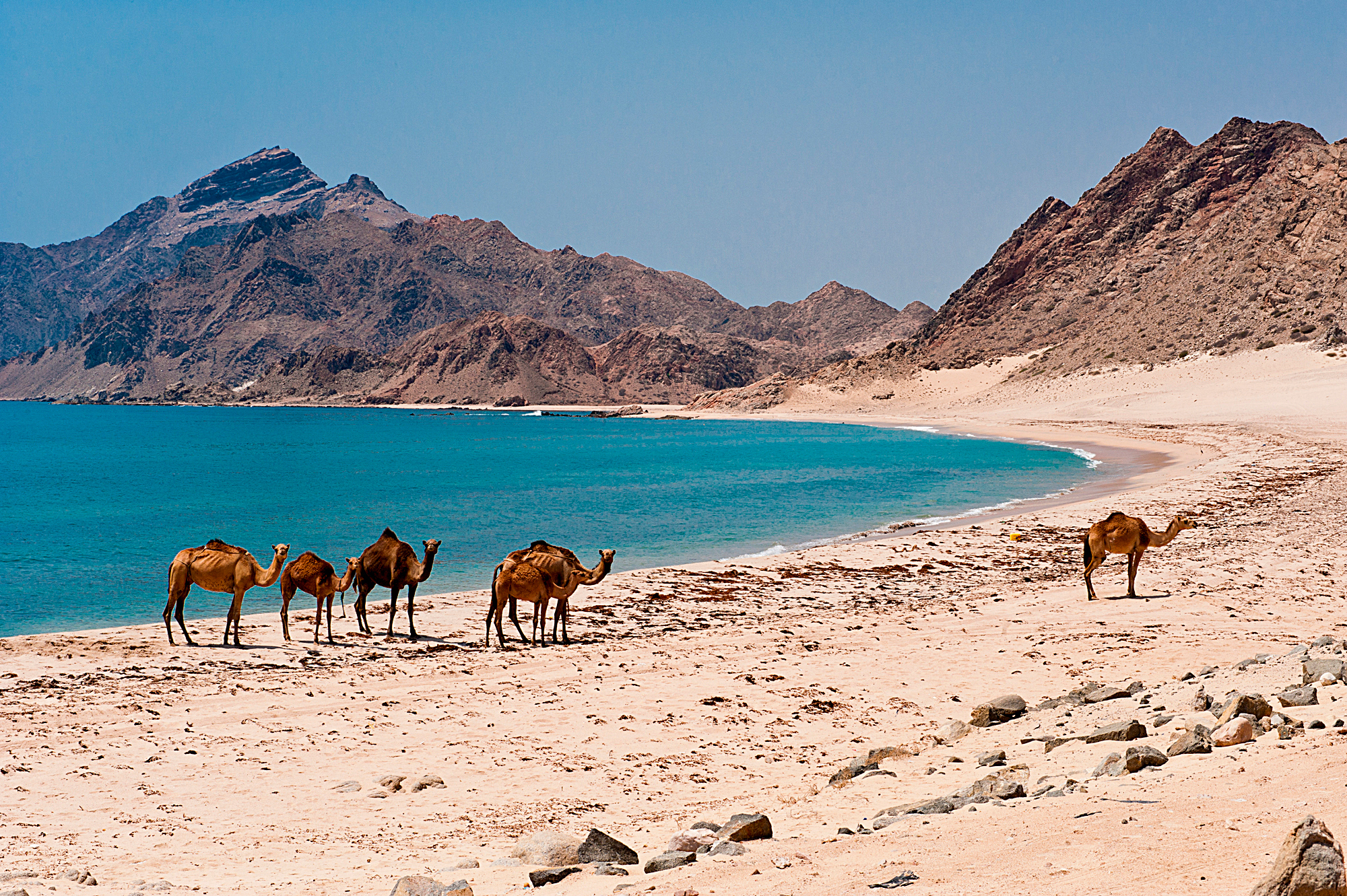
Photo by Oman Tourism
Subscribe and view full print editions online... Subscribe